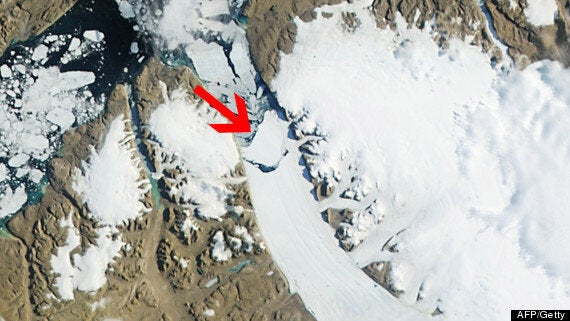Sea ice in the Arctic has melted to below four-million square kilometres, the lowest it has been for a million years, according to a noted sea ice geophysicist and climatologist.
Professor John Yackel from the University of Calgary said: "This is the smallest minimum ice extent we've ever had, and not just in the satellite record, but probably in the last million years."
Last week marked the end of the summer ice melt and satellite monitoring shows that it has dramatically diminished since 1979, when records began.

A map showing Arctic sea ice on August 26 2012, the line on the image shows the average minimum ice cover from 1979-2010, as measured by satellites
The previous record low for Arctic sea ice extent was set on 18 September 2007, with a 4.17 million square-kilometre ice cap.
Yackel and the university-based Cryosphere Climate Research Group use satellite technology to research the physical properties of Arctic ice.
As recently as the 1980s, most of the ice in the Arctic Ocean was "multi-year ice" – thick ice that would remain throughout the summer.
At that time, the split between multi-year ice and seasonal ice – ice that would melt away in the summer – was about 80% multi-year and 20% seasonal.
“In the last 20 years we’ve almost gotten to the point where we’ve reversed that ratio,” Yackel says, predicting the ice extent that covers the Arctic Ocean “is likely to be gone in the summers within the next 20 to 25 years, if not sooner.”
Another worrying sign that the ice cover in the Arctic is undergoing a fundamental transformation is the breaking away of gigantic icebergs from Greenland's Petermann Glacier.
And in 2010 a block twice the size of this was set loose.

The iceberg that broke away in Greenland was a staggering 46-square-miles
Andreas Muenchow, from the University of Delaware, said: "The Greenland ice sheet as a whole is shrinking, melting and reducing in size as the result of globally changing air and ocean temperatures and associated changes in circulation patterns in both the ocean and atmosphere."
The depleting ice cover would have serious ramifications for the planet. Arctic ice acts as a reflector of sunlight, helping regulate the Earth’s temperature, cooling the climate.
“When there’s no longer that sea ice below the air mass and it's just open ocean, that’s when more moisture off the ocean’s surface gets into the atmosphere and the water vapor in the atmosphere makes for more violent storms,” said Yackel.
“We can also expect to see an increase in storm frequency and storm intensity for most of the world's populated places as the Arctic and Earth continues to warm.”
Nobel Prize-winning chemist Mario Molina agrees - and links the problem with humans pumping carbon dioxide into the atmosphere.
Earlier this year he told a meeting of the American Chemical Society: “People may not be aware that important changes have occurred in the scientific understanding of the extreme weather events that are in the headlines.
"They are now more clearly connected to human activities, such as the release of carbon dioxide - the main greenhouse gas - from burning coal and other fossil fuels."